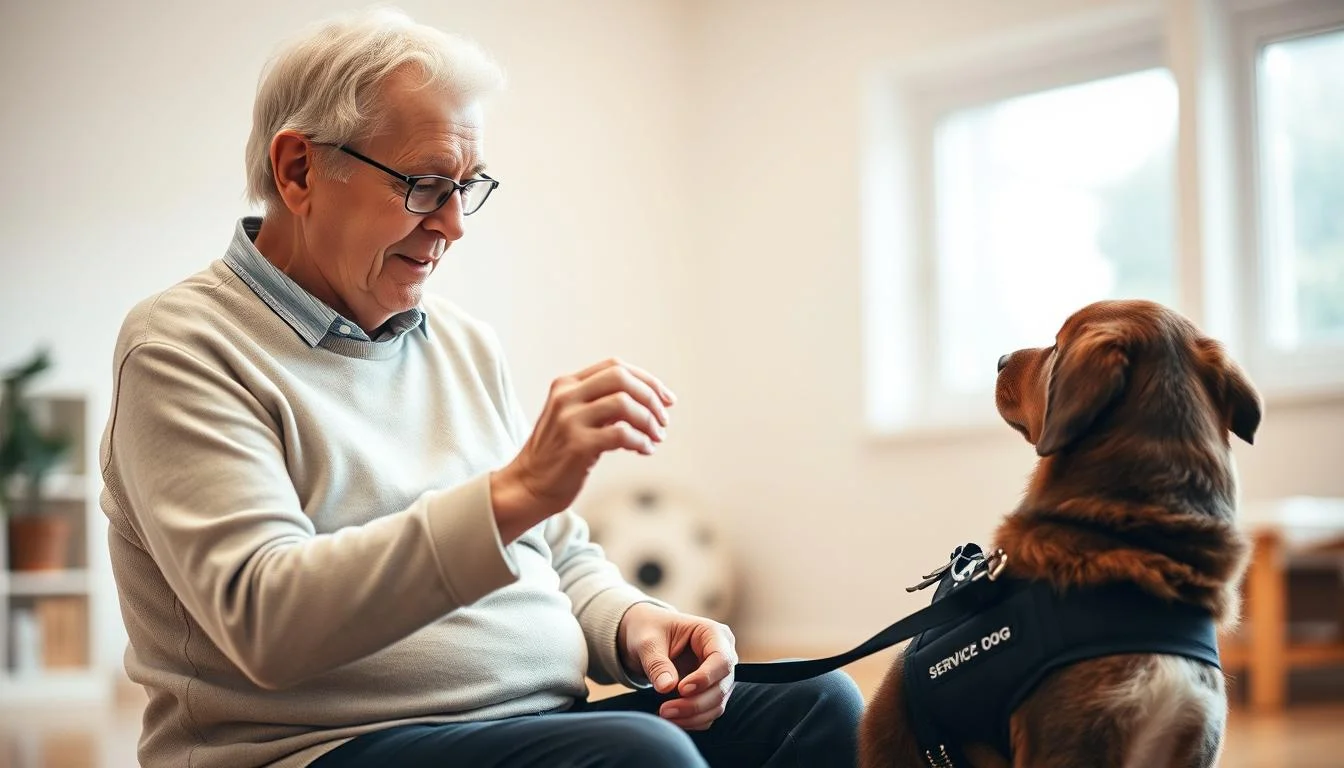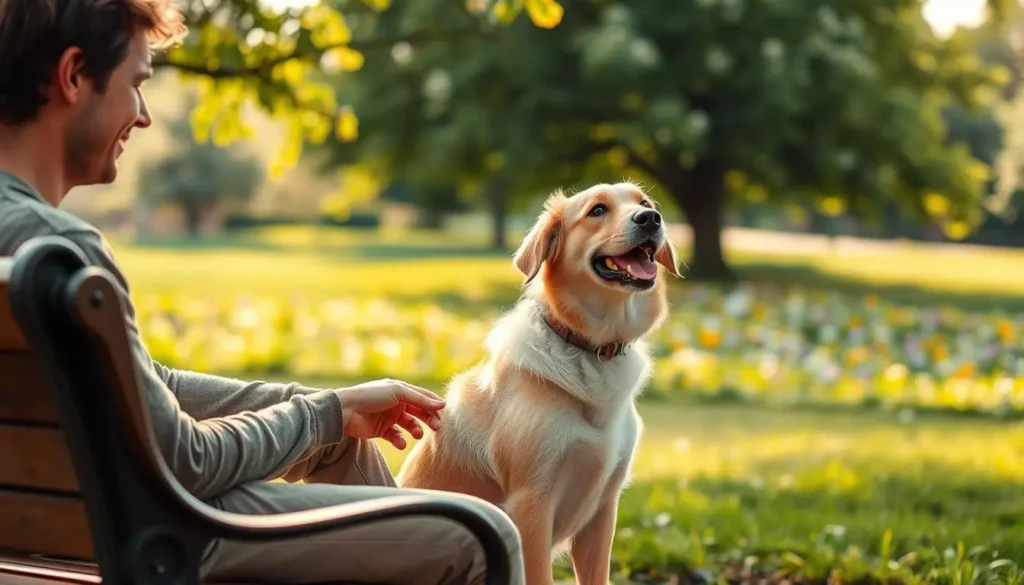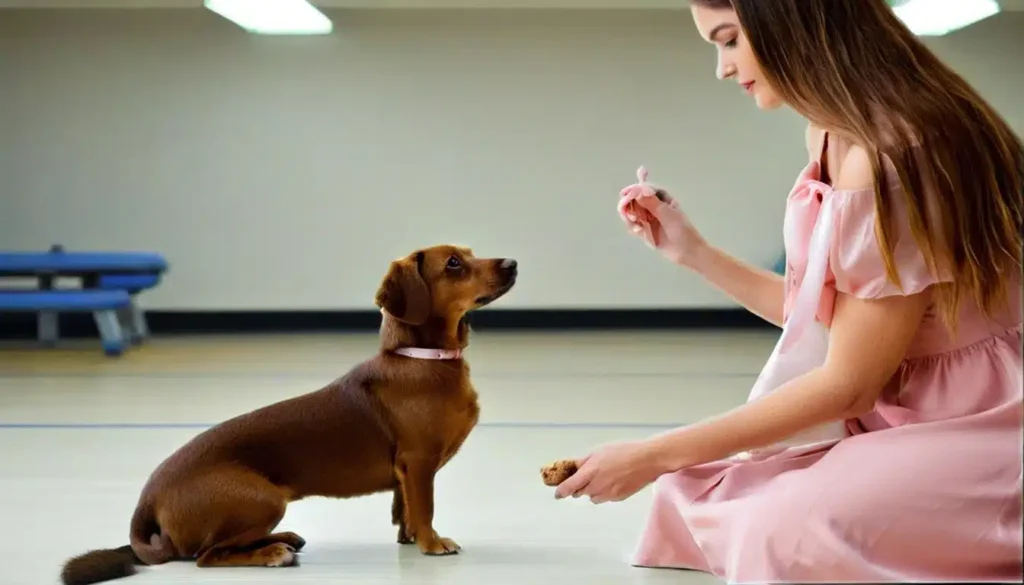Key Takeaways
- There is no formal maximum age for service dog training under federal law.
- Many dogs complete training by 2–3 years and often work until about age 10.
- Health, temperament, and task demands matter more than chronological age.
- Older dogs can succeed with the right screening and adapted training plans.
- Retirement timing varies—consult vets and trainers to set realistic expectations.
Understanding the basics of service dog requirements and age considerations
I explore how laws, training, and health meet when discussing service dog training age limits. My goal is to provide clear information. This helps readers make informed decisions for their dogs. The Americans with Disabilities Act outlines what makes a service dog, but age is often a concern.
Legal definition and core requirements under the ADA
The ADA says a service dog is one trained to help a person with a disability. It doesn't require certification, vests, or a specific age. Airlines have their own rules for in-cabin pets, but these don't change the ADA's standards.
Typical training milestones and why age matters for task performance
First, puppies learn social skills and basic obedience. Training usually starts between 12–24 months. By 24–36 months, they can handle public places well.
Physical and mental maturity are key. They ensure a dog can handle tasks without injury. Early socialization is also crucial for handling busy places.
How age ties into temperament, health, and public access behavior
Age impacts a dog's temperament in various ways. Older dogs tend to be calmer and easier to handle. I look for health issues that could affect their ability to work.
Trainers consider temperament, vet checks, and the dog's working life when setting age limits. This approach helps answer personal questions about a dog's suitability for service work.
how old is too old for service dog training
Many owners ask me if their older dog can still learn to be a service dog. I tell them that "too old" isn't just a number. It depends on the dog's health, learning ability, and how long they can work.
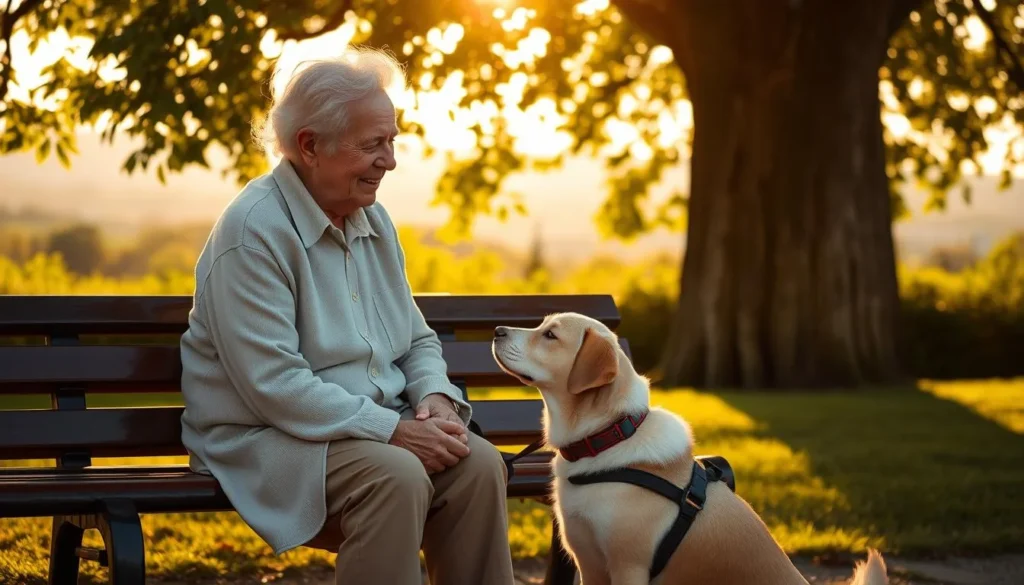
I check the dog's bones, pain, energy, and brain health. If they have serious arthritis or other ongoing problems, they might not be able to do hard tasks. These issues can shorten the time they can work as a service dog.
Then, I look at how well they can learn. Older dogs can pick up new skills with patience and the right teaching methods. Short, easy sessions and clear rewards help a lot. Even if they can't hear or see as well, they can still learn.
I also think about how long they can work. Training an older dog means they won't work as long as a younger one. Many trainers consider age when deciding if it's worth the time and money.
What “too old” means in practice
In practice, "too old" means the dog might not be able to do hard tasks because of their bones, pain, or energy. It also means they might learn slower or not as well. These things help me decide if an older dog can be a service dog.
Why there’s no formal maximum age
There's no law that says how old is too old for a service dog. Instead, each program decides based on the dog's health and how well they can learn. Some places have rules based on how much work they can handle. That's why the age limit varies.
Real-world examples from trainers and schools
I've seen programs that take older dogs after checking their health and behavior. Some centers require dogs to stay with them during training and can remove them if they don't meet standards. Others ask for vaccines and a behavior test before starting.
| Program Type | Typical Age Policy | Key Requirements |
|---|---|---|
| Dedicated training center (residential) | Often accepts 1–8 years, case-by-case for 8–10 | Full health records, temperament screening, on-site evaluation |
| Owner-participation program | More flexible; accepts older dogs if healthy | Regular vet checks, staged trials, shorter session plans |
| Private trainer accepting pets | Varies widely; many accept seniors with limitations | Behavioral assessment, modified curriculum, progress reviews |
| Nonprofit school with placement | Prefer younger dogs but evaluate on merit | Vaccines, temperament, working trials, potential removal policy |
I carefully consider each dog's situation before suggesting service dog training. My goal is to match them with tasks they can do and to consider their remaining working years. This approach keeps expectations realistic and protects the dog's well-being.
Minimum and optimal ages for starting service dog training, including development stages
I help owners understand the important ages and growth stages for a dog's readiness for service work. The right time to start service dog training is crucial. It affects a dog's focus, physical safety, and learning public-access tasks.
It's best to wait until a dog is mature before starting formal training. For many breeds, this means waiting at least six months to a year. This time allows puppies to develop attention, basic manners, and social skills.
Some airlines, like United Airlines, allow young service dogs in-cabin from four months old. But this doesn't mean they're ready for all training yet.
Age two is a good time for intense training. By then, most dogs have stopped growing and are less likely to get hurt. They also learn tasks better and more reliably.
Before age two, early socialization and exposure to different environments are key. These experiences help a dog prepare for complex tasks. Learning basic skills can take six to nine months or more, depending on the task and environment.
Breed and individual pace vary. Small breeds mature faster and might start training sooner. Large breeds take longer to grow and need training that's easier on their joints.
I look at a dog's temperament and health to decide when to start intense training. This helps answer when is the best age for service dog training and the practical limit for a dog's training.
When discussing timelines, I suggest a step-by-step approach. Start with socialization and obedience in puppyhood, then foundation work around one year. Finally, focus on public-access and task training around two years for most dogs. This approach balances learning with physical health.
Health screening and veterinary considerations for older service dog candidates
I guide owners through a vet-first approach for older dogs in service work. Early screening helps set realistic expectations for what tasks a dog can do. A stepwise health review is recommended before starting senior dog service training.
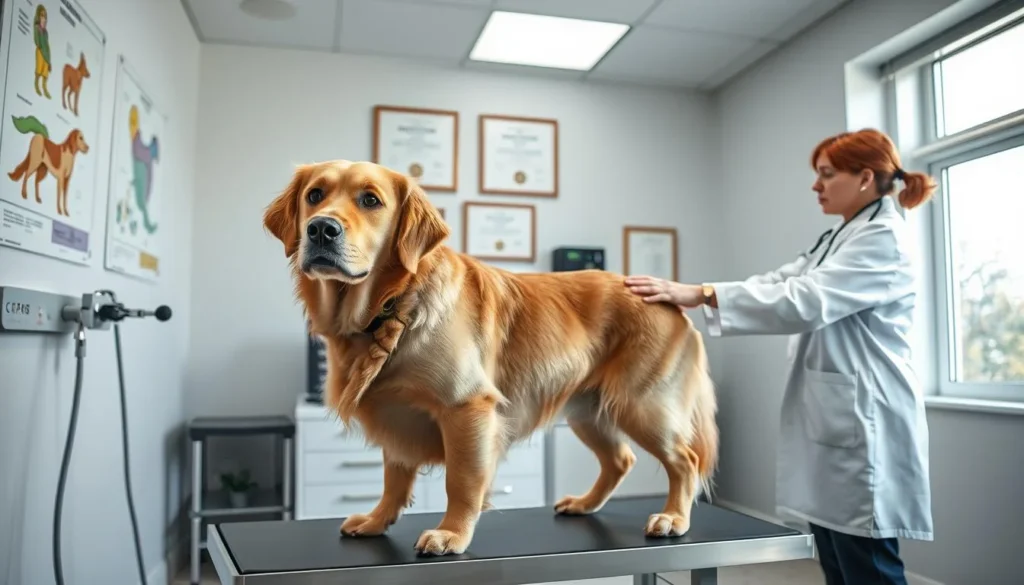
Common age-related issues
Arthritis and joint disease often lead to a pause or change in plans. Hip or elbow dysplasia, torn ligaments, and spinal problems limit mobility. This makes it hard for dogs to do tasks that need balance or weight bearing.
Vision and hearing loss can make dogs less responsive to cues. Dental disease can cause chronic pain, hiding a dog's willingness to work. Heart murmurs, endocrine disorders like hypothyroidism, and cognitive dysfunction can affect reliability in public.
Required vaccinations and wellness checks
Programs require up-to-date core vaccines and preventive care. Heartworm testing, flea and tick protection, and regular dental and fecal checks are essential. I advise compiling full medical records before applying to a program.
Some trainers ask for spay/neuter status and a recent wellness exam within 30 to 90 days. Labs may request specific clearance tests based on the dog’s breed and age. Clear documentation helps meet program intake rules and shortens vet follow-ups.
Assessing orthopedic risk and fitness for duty
I emphasize the need for X-rays and orthopedic evaluation for dogs doing physical tasks. Waiting until growth plates close or confirming no progressive joint disease in seniors reduces injury risk during training.
A mobility assessment and pain screening help decide if low-impact tasks are better than heavy mobility work. Trainers and programs will decline candidates with untreated degenerative conditions that jeopardize public access or safety.
When to consult a veterinarian
Consult a vet before enrolling in any senior dog service training program. Ask for a comprehensive exam covering cardiac, endocrine, dental, sensory, and musculoskeletal systems. Discuss the dog's likely working lifespan and realistic task expectations.
For older dogs, periodic rechecks are crucial. I recommend follow-ups every six to twelve months or sooner if the dog shows stiffness, behavior shifts, or reduced stamina. Owners usually cover vet costs when a pet joins a program, so plan ahead for ongoing care.
Practical notes on age limits and program acceptance
There are no universal age restrictions for service dog training, but programs differ widely. Some accept healthy seniors for low-impact roles. Others require younger candidates for rigorous tasks. I advise checking intake criteria and preparing health screening for service dogs documentation to speed decisions.
Temperament and behavioral factors that determine suitability at older ages
I look for calm, steady responses when I evaluate an older dog. Temperament for service dog training shows up as low reactivity to strangers. Dogs should also stay focused amid distractions and be comfortable with common urban stimuli.
Dogs that remain composed in busy settings often adapt best to public-access routines.
I check environmental stability next. Dogs exposed to varied experiences earlier in life tend to be more resilient. An older dog with reliable social skills and a history of calm outings can be a strong candidate for service dog training for older dogs.
Below I outline simple assessment points I use in evaluations.
- Response to strangers and other animals: polite curiosity or indifference.
- Focus in distracting spaces: ability to work near noise and movement.
- Impulse control: waiting calmly for cues and returning attention on command.
- Tolerance for handling: comfort with harnesses, gentle restraint, and brief medical checks.
Some behaviors act as clear red flags. High reactivity or aggression toward people or dogs is a likely disqualifier for public access. Severe separation anxiety that causes destructive behavior or persistent vocalizing can make service roles unsafe.
Extreme fear, poor impulse control, or a consistent inability to ignore environmental distractions also reduce the chance a dog will pass a public-access test.
I adapt training plans when I work with seniors. Short, frequent sessions keep stress low and improve retention. I rely on positive reinforcement and high-value rewards to build new behaviors.
Replication is important, but I increase it at a gentle pace so the dog stays confident.
When anxiety or slower learning shows up, behavior modification programs can help. Working with trainers who have experience in service dog training for older dogs is essential. These trainers assess trainability and temperament, decide if the dog fits their program, and recommend next steps.
Age restrictions for service dog training rarely come from law; they come from these practical assessments and program policies.
Types of tasks older dogs are most likely to learn successfully
I help owners and trainers find the right tasks for older dogs. These tasks need brains more than strength. Before starting, I check the dog's health and focus.
Tasks like reminding, light retrievals, and helping with anxiety are good for seniors. These tasks are easy on their joints. They use the dog's sense of smell, timing, or steady behavior.
Some tasks are too hard for older dogs. I avoid tasks that need a lot of strength or movement. Tasks that are too repetitive or hard can hurt their joints.
I choose tasks that fit the dog's abilities. A calm dog might do well reminding people to take medicine. A lively older dog might be good at picking up small items.
Trainers and programs pick tasks that are right for the dog. If the dog can't go everywhere, they find other roles. This keeps the dog happy and healthy.
| Task Category | Examples | Why it suits seniors |
|---|---|---|
| Low-impact cue work | Medication reminders, alarm nudges, prompt to sit for safety | Requires timing and consistency, minimal physical strain |
| Light retrievals | Pick up dropped phone, bring remote, carry lightweight bag | Short, controlled movements that use training over power |
| Psychiatric service tasks | Tactile grounding, interrupting panic, deep-pressure lean (if safe) | Relies on calm presence and steady focus rather than speed |
| Tasks to avoid | Bracing for balance, wheelchair pulling, long endurance work | High risk of joint strain and injury for older animals |
| Program outcomes | Limited-public-access roles, hybrid duties, retirement planning | Matches the dog's lifespan, temperament, and the client's needs |
There's no strict age limit for service dog training. The dog's health and the tasks they can do are more important. Senior dog service training can still be very meaningful.
Training approaches and timelines for older dogs versus puppies
Handlers often wonder if older dogs can learn as well as puppies. I share practical methods that consider age, health, and past learning. Short, focused sessions with rewards help set realistic goals for older dogs.
For older dogs, I use short, positive sessions. Ten to twenty minutes, two to four times a day, keeps them focused. I use treats, clickers, and hand signals for those with hearing or vision loss. Small successes build confidence.
Older dogs often learn certain skills faster. Their calm nature helps them pick up public-access cues quickly. However, tasks needing strength or endurance may take longer, affecting training timelines.
Training plans depend on the dog's past training, health, and task complexity. Basic obedience can take three to nine months. Full public-access certification might take a year, considering medical checks and socialization.
Longevity is a key factor in cost-benefit analysis. Older dogs offer immediate help and strong bonds. Some owners accept a shorter service life for these benefits. Others consider program costs against expected service years before starting training.
Professional programs evaluate pet dogs for training. They require vaccination records and a temperament check. Dogs may attend in-person training or follow a hybrid plan with owner involvement. Trainers can release dogs that don't meet safety or learning standards.
Below, I compare training approaches, timelines, and typical steps to help you decide.
| Area | Older Dogs | Puppies |
|---|---|---|
| Session style | Short, focused, reward-rich; adapts for sensory loss | Longer shaping sessions; higher physical stamina |
| Expected timeline | 3–12 months to usable tasks; full public access may take up to a year | 6–18 months including imprinting and socialization |
| Learning speed | Quicker on cues tied to maturity; slower on new motor skills | Fast motor learning; needs time for impulse control |
| Program requirements | Vaccines, vet clearance, temperament screen; possible residency | Early socialization plan, health checks, breeder or school vetting |
| Longevity and ROI | Fewer service years; strong immediate bond may offset cost | Longer service life; higher long-term ROI if health permits |
| Common outcome | Good for low- to medium-impact tasks; ideal when bond with handler exists | Versatile workers for a broad range of tasks with longer careers |
Before enrolling an older dog, ask programs about trial periods, refund policies, and release criteria. Knowing the timeline and realities helps owners choose the best option for their needs and values.
Breed, size, and lifelong health considerations impacting maximum age for service use
When I think about a dog's working life, I look at their breed, size, and health history. The breed can affect how long a dog works. For example, big dogs like Great Danes and Mastiffs age faster and work for a shorter time. On the other hand, small dogs often live longer and can work for more years.
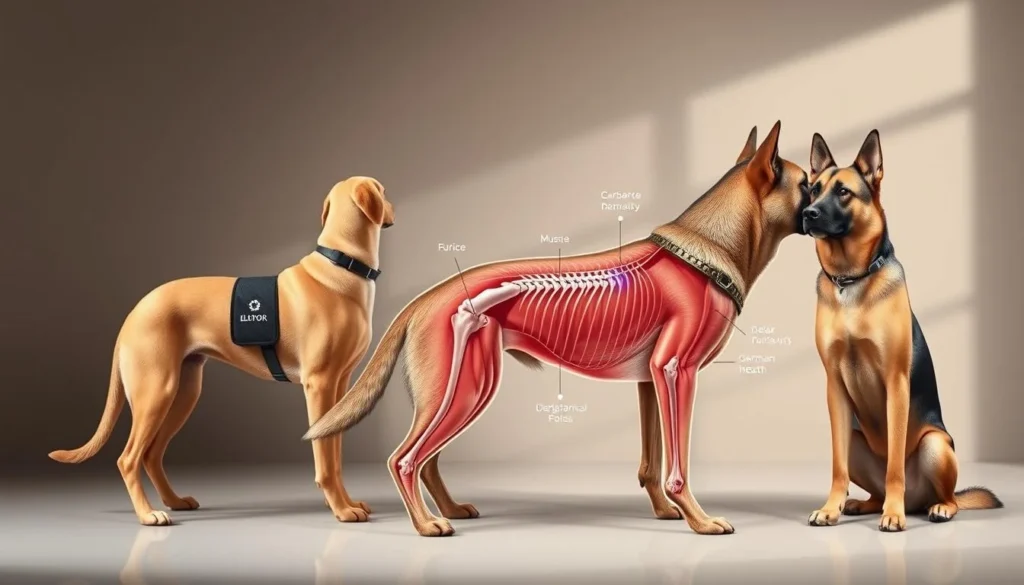
I check for health issues like hip and elbow problems, joint disease, and heart issues before training starts. This helps avoid early retirement and ensures a healthy start. Choosing dogs with clear health records helps them have a long career and reduces genetic risks.
I also think about the size and training needs of each dog. Big dogs are great for mobility but can be hard to move around in tight spaces. Small dogs are easy to travel with but might not be strong enough for heavy tasks. It's important to match the dog's size to the job it will do.
I plan for when a service dog will retire early. For medium and large dogs, retirement is usually around 10–11 years old. Smaller dogs can work longer. Having a plan helps families avoid gaps in care and spreads out the cost of training or getting a new dog.
I use a checklist to advise clients: health clearances, evidence of working lines, size-task fit, and a retirement plan. This approach helps set realistic goals and ensures the dog's well-being. It helps me suggest breeds and dogs that fit the job and the family's long-term needs.
| Breed/Size | Typical Lifespan | Common Orthopedic Risks | Service Strengths | Planning Notes |
|---|---|---|---|---|
| Great Dane / Large | 6–10 years | Hip dysplasia, osteosarcoma | Strong mobility support, stable presence | Expect shorter service life; budget for earlier replacement |
| Labrador Retriever / Medium | 10–13 years | Hip/elbow dysplasia, cruciate injuries | Versatile tasks, proven working lines | Good balance of longevity and capability; screen hips |
| Golden Retriever / Medium | 10–12 years | Hip dysplasia, elbow issues, cancer risk | Reliable temperament, strong retrieve skills | Health-forward selection improves service dog retirement age outlook |
| Poodle (Standard) / Medium-Large | 10–15 years | Addison’s, orthopedic concerns in lines | Highly trainable, allergy-friendly options | Consider working-line health testing |
| Border Terrier / Small | 12–15 years | Patellar luxation, dental disease | Agile, low-impact tasks, easy travel | Ideal for low-impact assistance and long working life |
Options if an older dog isn’t suitable: alternatives and hybrid roles
Many owners worry their dog can't meet full public-access standards. There are ways to keep a dog active and valued without full service work. Here are some practical alternatives and hybrid roles that respect a dog's age and abilities.
Emotional support, therapy, or companion roles
It's important to know the difference between emotional support and service dogs. Emotional support animals offer comfort at home and in some housing contracts. But they don't have ADA public access rights. Therapy dogs work in hospitals, schools, and community centers under scheduled visits. Both roles are great for older dogs with calm temperaments and steady health.
Partial task assistance and limited-public-access roles
Partial task assistance can help when full certification is not possible. An older dog might remind you of things, do light retrievals, or provide comfort in private settings. Limited-public-access service roles allow a dog into certain controlled environments when their behavior and health allow it.
Working with trainers to rehome or repurpose
Professional trainers and programs offer options if a dog can't continue training. Some trainers recommend rehoming to a family that wants a companion animal. Other programs suggest therapy-dog certification if the temperament fits. Always ask trainers about return policies if a dog fails service evaluations.
Practical next steps
Start by talking to your veterinarian and a reputable trainer. A vet can check if fitness or pain affects training. A trainer can evaluate behavior, suggest alternatives, and plan a path that protects the dog's wellbeing and your needs.
| Option | What it offers | Best for |
|---|---|---|
| Emotional Support Animal | Home-based comfort, possible housing accommodations | Dogs with strong bonds to owner, low stress in public |
| Therapy Dog | Structured visits in healthcare or education settings | Calm, sociable dogs that enjoy people and new places |
| Partial Task Assistance | Targeted help at home or limited public tasks | Older dogs with specific reliable skills |
| Companion/Family Pet | Less stress, more leisure, quality of life focus | Dogs with medical limits or reduced stamina |
| Rehoming via Trainer | Planned placement with a suitable family | Owners unable to keep a dog that cannot work |
How to evaluate your own dog: a step-by-step decision checklist
I guide you through a checklist to see if your dog can be a service dog. First, check their health. Then, look at their temperament and experience. If unsure, get a professional evaluation from a trusted service dog trainer.
Health, temperament, and environmental exposure checklist items
Start with health. Make sure they're up-to-date on shots and have a recent vet visit. Also, check for any orthopedic issues.
Next, test their temperament. Look for calmness in busy places and low reactivity to others. They should also behave well in public.
Then, review their experience. Check their basic obedience skills and how they handle different environments. Note their reactions to loud noises and crowds. Keep a record for your trainer.
How to get a professional evaluation from a reputable service dog trainer
Apply to well-known trainers or schools that accept pet dogs. They'll test your dog's temperament and trainability. They'll also review their medical records.
Ask if they require your dog to stay for a trial. Many trainers do short boarding assessments. This helps them see how your dog behaves in real situations.
Questions to ask training schools about age limits, trial periods, and costs
When you contact programs, bring a list of questions. Ask if they accept older dogs and if there's an age limit. Also, ask about health requirements and program length.
Find out if dogs stay at the facility and what the policies are for refunds and trials. Clarify all costs and any discounts for training your pet. Also, ask about retirement policies for working dogs. Get all answers in writing before you decide.
| Checklist Area | Key Items to Verify | Action if Concerned |
|---|---|---|
| Health | Vaccinations, vet exam, orthopedic screen, mobility test | Obtain vet clearance; consider specialist consult |
| Temperament | Calm in crowds, low reactivity, social with people/animals | Work with behaviorist or seek alternative roles |
| Experience | Basic obedience, exposure to noises and crowds, leash manners | Plan staged exposure and short training sessions |
| Professional Evaluation | Temperament test, trainability assessment, medical record review | Submit complete records and schedule a live assessment |
| Trainer Questions | Do you accept older pets? What are age cutoffs? Trial and refund policies? | Compare answers across programs before choosing |
Conclusion
I've explained why there's no fixed age limit for service dog training. Instead, health, temperament, and the task's needs are more important. When training older dogs, it's crucial to match tasks carefully.
Deciding if an older dog can be trained involves several steps. A full vet check, temperament tests, and breed and size considerations are key. Also, getting advice from a skilled trainer is essential.
Think about if the dog can handle public tasks and how long they'll work. This will help decide if they're ready for service dog duties or if they're better suited for other roles.
If an older dog isn't suited for public service, there are still options. They could do therapy work, assist in limited ways, or be a loyal companion. Always talk to a vet and a trusted trainer for a personalized plan.
I hope this guide helps you figure out if your dog can be a service dog. Or if they're better suited for another role.

